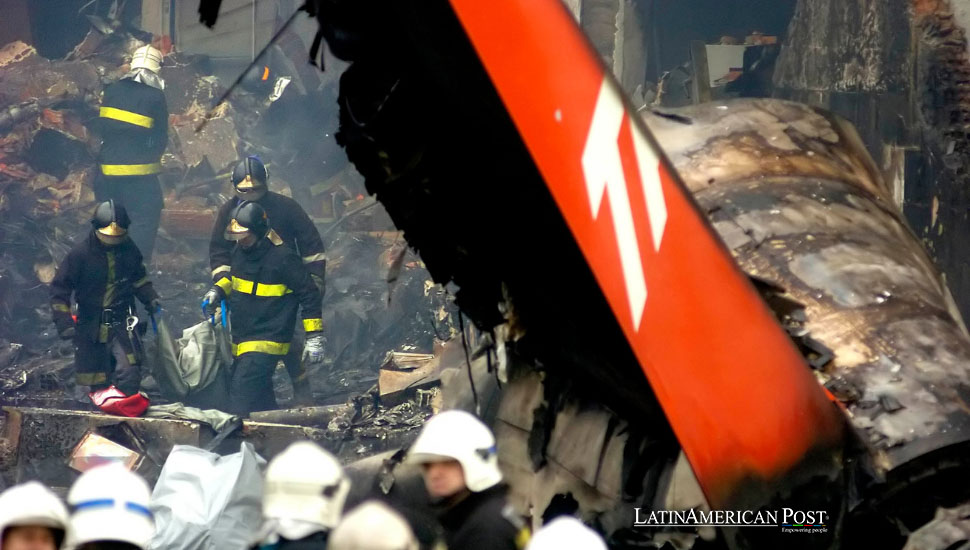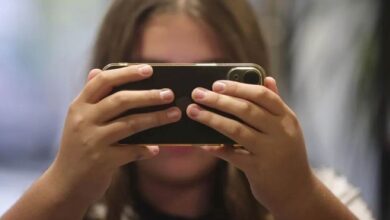The Untold Story Behind Latin America’s Deadliest Airline Crash

On July 17, 2007, TAM Airlines Flight 3054 crashed at São Paulo’s Congonhas Airport after overrunning the runway, killing 199 people. As the crash details unfolded, it became clear that a series of critical errors had caused Latin America’s worst airline disaster.
A Perfect Storm
In 2007, Brazilian aviation faced significant difficulties. Air travel demand increased rapidly at a rate of 15 % each year. After Varig, the largest airline in Brazil, stopped flying, carriers such as TAM Airlines worked to take its place. Fast growth became more than the country’s aviation infrastructure could handle. Airports were congested, air traffic controllers were overworked, and flight delays were rampant.
At the center of this strained system was São Paulo’s Congonhas Airport, the busiest in Brazil, known for its notoriously short runways and urban location. Pilots had long considered the airport risky, especially when the weather turned bad. Its main runway, 35L, was just 1,945 meters long, far too short for the traffic it handled. To make matters worse, the runway’s resurfacing in June 2007 had been completed without proper grooving, allowing rainwater to pool and making it dangerously slippery.
By July, over half of all flights in Brazil were delayed, adding to the stress on airline crews. The pilots of TAM Flight 3054 were no exception. That fateful evening, after a short flight from Porto Alegre to São Paulo, they faced mounting pressure as they prepared to land on a wet, slippery runway with one of the aircraft’s thrust reversers inoperative.
The aircraft was an A320-233 Airbus, a reliable plane, but like many others in TAM’s rapidly expanding fleet, it had been in service for several years and was not in perfect condition. The pilots had operated the aircraft earlier that day and knew of the malfunctioning thrust reverser, which reduces an aircraft’s speed upon landing by reversing engine thrust. While landing with one reverse is permissible, it complicates the situation on a wet, short runway like the one at Congonhas.
What followed was a tragic combination of miscommunication, stress, and human error that would lead to one of the darkest days in Latin American aviation history.
In the Cockpit: A Deadly Decision
The cockpit of Flight 3054 was staffed with two experienced pilots—both captains. The pilot in command had over 13,600 flying hours, including more than 2,200 on the Airbus A320. His colleague, who was serving as the first officer that day, had even more flight hours but limited experience with the A320, having only logged 237 hours on that aircraft. TAM’s scheduling problems caused the two captains to fly together. The problems occurred with increasing frequency during the airline’s fast growth.
Toward São Paulo, stress grew inside the cockpit. The pilots knew the landing would happen at a difficult airport in Brazil. The conditions were not ideal. Light rain made the runway wet, and visibility decreased. The landing became complex because of a non-functioning thrust reverser. The captain wanted a flawless result. He knew about the low runway friction and prior incidents.
During the approach, the captain chose a path. Instead of following the updated procedure for landing with an inoperative thrust reverser, which had been in place since January 2007, he relied on an older procedure he was more familiar with. The previous procedure required pilots to pull just one thrust lever into reverse while leaving the other in a neutral position. This method has resulted in multiple accidents in the past. A revised process helps lower errors. It tells pilots they must move two thrust levers at the same time.
The old process told pilots they must pull just one thrust lever into reverse and leave the other in a middle position. This earlier way created several accidents. An updated procedure was implemented to reduce mistakes by instructing pilots to move both thrust levers simultaneously. This action decreases the likelihood of an engine inadvertently remaining in forward thrust. This action decreases the possibility of an engine inadvertently remaining in forward thrust.
In the absence of understanding about how much that change mattered, the captain used the previous procedure. As Flight 3054 touched down on the wet runway, the captain pulled the left thrust lever back to idle and reverse thrust but mistakenly left the right lever in the climb detent, causing the right engine to continue producing forward thrust. This created a deadly asymmetry in the aircraft’s power, which made it nearly impossible to control.
A Recipe for Disaster
Congonhas Airport has long been a concern in Brazil’s aviation industry. Located in the heart of São Paulo, it is surrounded by dense urban development, leaving no room for expansion or safety buffers. Its short runways, combined with the lack of runway end safety areas (RESAs), make Congonhas one of the most dangerous airports in Brazil—particularly in wet weather.
The choice to reopen the runway in June 2007 without grooves will have fatal consequences. Grooves help in water dispersion and improve grip. During the weeks before the crash, several airport events caused planes to slide off the runway because the surface lacked friction. Pilots knew the dangers. Many believed a significant accident was close.
On July 16, the day before the TAM crash, an ATR 42 left the Congonhas runway. It struck a light pole plus a concrete box. The aircraft had a large amount of damage from this event, but no person died. That incident was a warning. Flights went on – no additional safety measures were taken.
As Flight 3054 approached Congonhas that evening, the weather conditions were deteriorating. Light rain made the runway slick, and the pilots knew landing would be difficult. The captain faced pressure. The runway had a bad reputation. It probably caused the captain to feel more anxious.
The Crash: A Tragedy Unfolds
At 6:54 PM local time, TAM Airlines Flight 3054 reached Runway 35L at Congonhas Airport. The aircraft made contact with the ground in the specified area at a speed of 142 knots. But the situation deteriorated very quickly. The plane could not slow down with the right engine still producing forward thrust and the ground spoilers not deploying.
The ground spoilers, crucial for reducing lift and helping the aircraft settle onto its wheels, failed to deploy because the right thrust lever had not been idle. Without the spoilers, the plane continued to “fly” down the runway, and the brakes—already less effective on the wet surface—were rendered nearly useless.
As the plane sped down the runway, the asymmetric thrust caused it to veer to the left. The captain desperately applied manual braking and the right rudder to counteract the drift, but it was too late. The aircraft traveled at more than 100 knots. It veered from the runway. The plane crossed a grassy area. The aircraft briefly left the ground. It flew over an embankment.
After a few seconds, the plane crashed. The aircraft struck a TAM Express warehouse and a Shell gas station. Near the runway were the warehouse and the gas station. The impact did much damage. Fuel tanks on the plane broke open. A fire resulted from this. The fire then surrounded the plane’s remains. All 187 passengers and crew on board were killed, along with 12 people on the ground. The fire burned for hours, making rescue efforts nearly impossible.
Investigations and Accountability
The crash of TAM Flight 3054 shocked Brazil and the world. In the following days and weeks, investigators from Brazil’s Civil Aviation Authority (ANAC) and international aviation organizations worked to piece together what had gone wrong.
The investigation report pointed out important items that led to the disaster. A pilot error was the main cause of the accident. The captain used a procedure from the past and did not lower the right engine’s power. Because of this, the ground spoilers near the engine did not work. That engine then pushed the plane ahead. It could not stop.
The investigation showed a significant problem with the system. Congonhas Airport lacked good safety features. Grooves and RESAs were absent from the runway. A slippery runway and a short stopping distance meant a small error produced considerable, terrible consequences.
TAM Airlines was also criticized for its inadequate pilot training. The investigation revealed that the airline had rushed many pilots through training programs, particularly as it expanded rapidly after Varig’s collapse. The captain of Flight 3054, while experienced, had not been adequately trained on the updated Airbus procedures for handling inoperative thrust reverser procedures that might have prevented the crash.
ANAC was criticized for failing to regulate and oversee Congonhas Airport properly. Despite known safety concerns, reopening the runway without grooving was a critical misstep. The investigation finished. Grooves helped the plane stop before the runway ended. If the grooves were present, the aircraft stopped.
Lessons from Flight 3054
TAM Flight 3054’s destruction had a lasting effect on Brazil’s air travel sector. After the event, authorities implemented essential changes to raise the level of safety at Congonhas Airport and other airports within the nation.
One of the most significant changes was the installation of Enhanced Materials Arrestor Systems (EMAS) at both ends of Runway 35L and 17R at Congonhas. EMAS consists of crushable materials designed to stop an aircraft that overruns the runway. This system has been proven to reduce the severity of runway excursions and has since become a standard safety feature at many airports worldwide.
Remembering the Victims
As the years have passed since the tragic events of July 17, 2007, the memory of the victims of Flight 3054 remains a powerful force for change. Memorials have been erected in São Paulo and Porto Alegre to honor the lives lost, and every anniversary of the crash brings together families, friends, and aviation professionals to reflect on the lessons learned and the work still to be done.
For victim families, loss pain remains a constant reminder of aviation disaster human cost. Their support for better safety steps, stricter rules as well as company responsibility has been important in driving reforms after the disaster. In several aspects, their determination made the Flight 3054 deaths not pointless.
The crash of TAM Airlines Flight 3054 remains the worst airline disaster in Latin American history. It shows how complicated arrangements of airlines, airports, regulatory bodies, and pilots can break down. The text indicates that satisfaction with the current state threatens safety in aviation and all sectors. After the event, changes were made. The changes made aviation safer in Brazil and Latin America. Yet, they must be continually evaluated, updated, and enforced to prevent history from repeating itself.
Also read: Two Decades Later Brazil Still Haunted by the Tragic Von Richthofen Murders
As we remember the victims of Flight 3054, we must also remain vigilant in ensuring that the lessons learned from this tragedy continue to inform the future of aviation. This disaster’s legacy is not just one of loss but of progress and change, driven by the collective will to make the skies safer for everyone.




